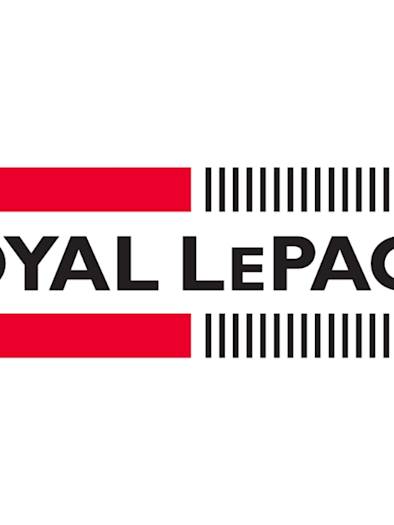
Year of the Ox: Three ways IR in Greater China will change
After a difficult Year of the Rat, IROs in the Greater China region need to emulate the Ox and be ready to work in a diligent and focused manner.
After a year spent on Zoom and other conferencing technologies, IR teams in China may be forgiven for any expectations of reduced screen time. Instead, they need to be prepared to work harder and brace themselves for more meetings – online and offline – and do their homework on a newer set of investors. By all accounts, the Chinese economy is expected to spearhead global economic recovery attracting global investor attention.
In Chinese culture, the Ox is a valued animal. Because of its role in agriculture, it is considered a hardworking and honest supporter of the farmer. Much like the animal, IROs will need to display similar qualities to ensure they help their companies enhance capital raising efforts, expand the shareholder base, and fulfil disclosure obligations.

Outline a hybrid communication strategy for the long haul
Virtual communication is now a facet of life. Even though Zoom meetings were previously considered an ineffective tool for building new relationships, prolonged exposure to virtual interaction could mean that could change.
At the very least, effective use of video conferencing technology will allow companies to establish and maintain relationships with a wider group of investors, including those that would have otherwise not been able to meet company representatives. IROs can also setup virtual meetings with key investors to field specific queries.
However, this new format brings with it certain challenges. In general, most people prefer shorter meetings if they are conducted online than face-to-face: typically, they last 30-45 minutes rather than an hour requiring a content strategy that maximizes the utility of every minute. Many IR teams have risen to the challenge and commissioned the creation of professionally-produced, pre-recorded content to provide basic information.
Virtual meetings can also be more interactive, including the use of live surveys, to ensure effective message delivery and audience retention. Whenever possible, IROs should establish their preference for video-based dialogues. It is more difficult, but not impossible, to build relationships and judge responses over video calls but it’s harder with blank screens.
Virtual meetings also allow IROs the opportunity to introduce investors to a wider group of senior management professionals. It also gives senior management a clearer idea of the expectations of investors for the coming quarters. Investors are now keen to discuss the finer points of the elements of a business through virtual meetings in a way they were not tempted to do before.IROs, however, need to ensure that senior management professionals beyond the key spokespersons are effectively trained so that they understand disclosure rules and know what they can and cannot disclose.
Whenever travel resumes, C-suite executives will surely meet investors in person. Nevertheless, IROs must prompt their C-suite teams to not give up on the momentum established amidst the pandemic and encourage them to continue to interact with investors virtually. As virtual conferencing technologies allow companies to schedule meetings based on investors instead of geographies, brokers are also marketing to global client bases.
Prepare to see a growing pool of international investors
Investors from around the world have been impressed by China’s strong recovery. Official statistics fail to account for the complete picture – according to Rhodium Group, a New York-based consultancy, the total amount of investment between entities in China and the United States last year was triple the official sum at $3.3 trillion, mostly due to passive investment in equity and debt.
According to HSBC Global Asset Management, China will also be a “preferred market” as investors are keen to scoop up investment opportunities in Chinese equities and bonds as they fulfil both return and diversification goals. In particular, Chinese bond valuations are appealing against a backdrop where a quarter of the global bond market offers negative yields.
As rising incomes and shifting trade flows mean a larger proportion of future global economic activity will originate in Asia, newer investors are turning to emerging market opportunities, especially in China.
In China, investors are also finding clarity on the post-pandemic behavior of customers – businesses and consumers alike – with business models that could be replicated in other parts of the world. IR teams will therefore need to get used to working with expanded stakeholder bases.
However, it will be important to get the right sort of investor interest. It will be important to pre-validate the interest of investors as many might just be ‘idea shopping’.
Explain the company’s role in national and global policy goals
Despite the broad-based appreciation for Chinese assets, IROs will still need to offer a compelling message on how their companies are going to contribute to national and global policy goals. It is well-known that Chinese policymakers are asking private enterprises to contribute to “domestic circulation” (an increased focus on domestic revenue channels) and are also supportive of digitization and sustainable development efforts.
Companies in e-commerce, healthcare and education are likely to outperform, according to HSBC, but there are opportunities for other companies to play a part in the government’s long-term goal to build a service-driven green economy.
Set to begin this year, the Fourteenth Five-Year Plan has outlined the long-term trajectory for the green economy. The COVID-19 pandemic has anyway placed a spotlight on the importance of environment, social and governance (ESG) frameworks. Globally, there is now a boom in thematic funds dedicated to environmental conservation – among the $110 trillion in assets that are being professionally managed, more than 40% of global financial assets now have an ESG consideration. Many will surely consider Chinese companies for their portfolios and therefore ‘ESG Days’ will become as important as investor days.
Of course, not all companies have fared well or stand to benefit from green development. In a tough market, IR teams will need to illustrate how their companies plan to bounce back or transform. Internally, it might not serve them well to rely on traditional measures such as share price or liquidity as performance metrics. Instead, it would be better to focus on alternative targets like evaluating the extent to which analysts understand their long-term transformation goals.
Even if it takes time for travel to get back to normal, the increased level of cross-country and cross-regional participation by investors means we are now more closely connected than ever before. Like an ox, all of us have to work hard to till the ground and ensure a bountiful harvest for tomorrow.







